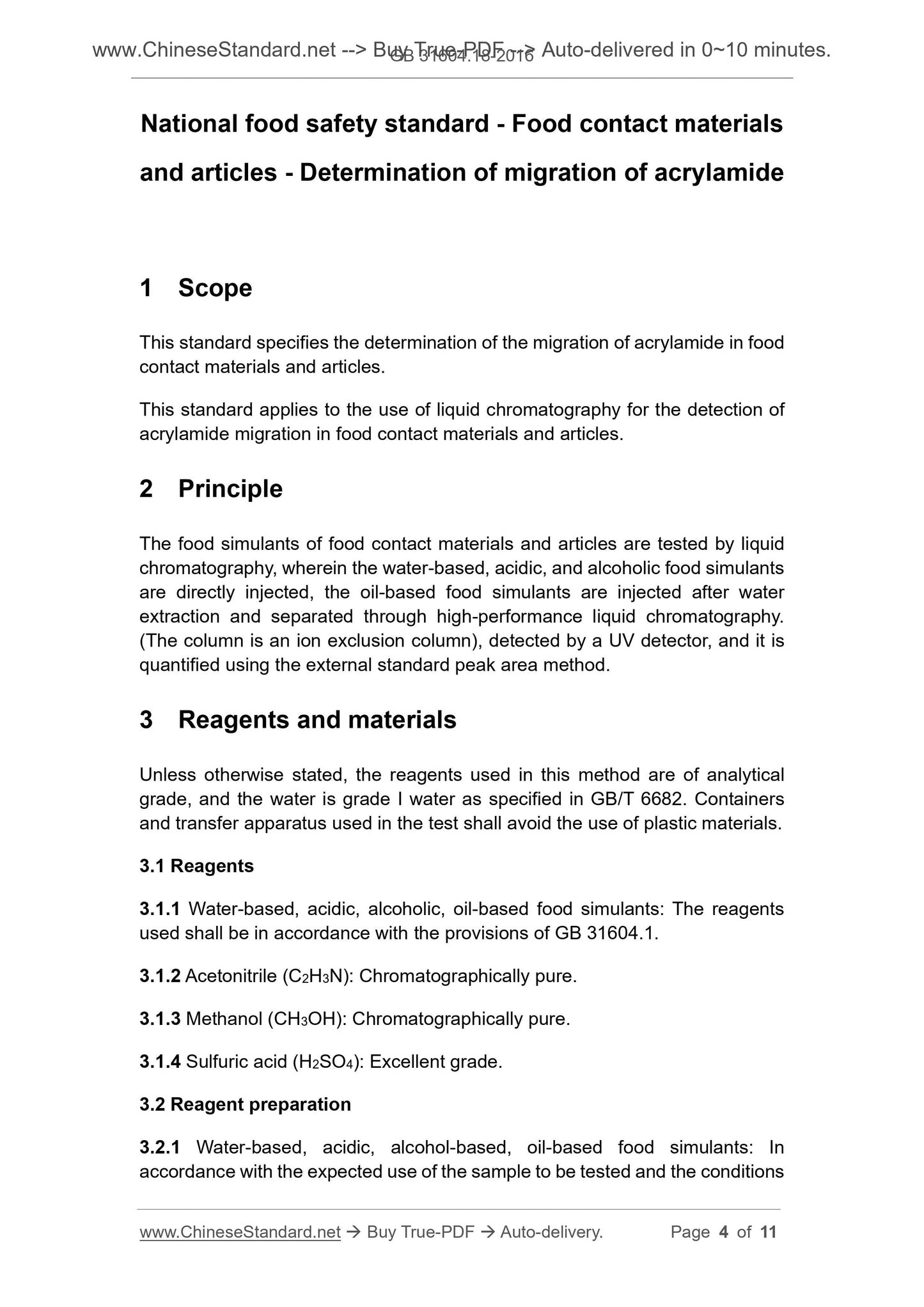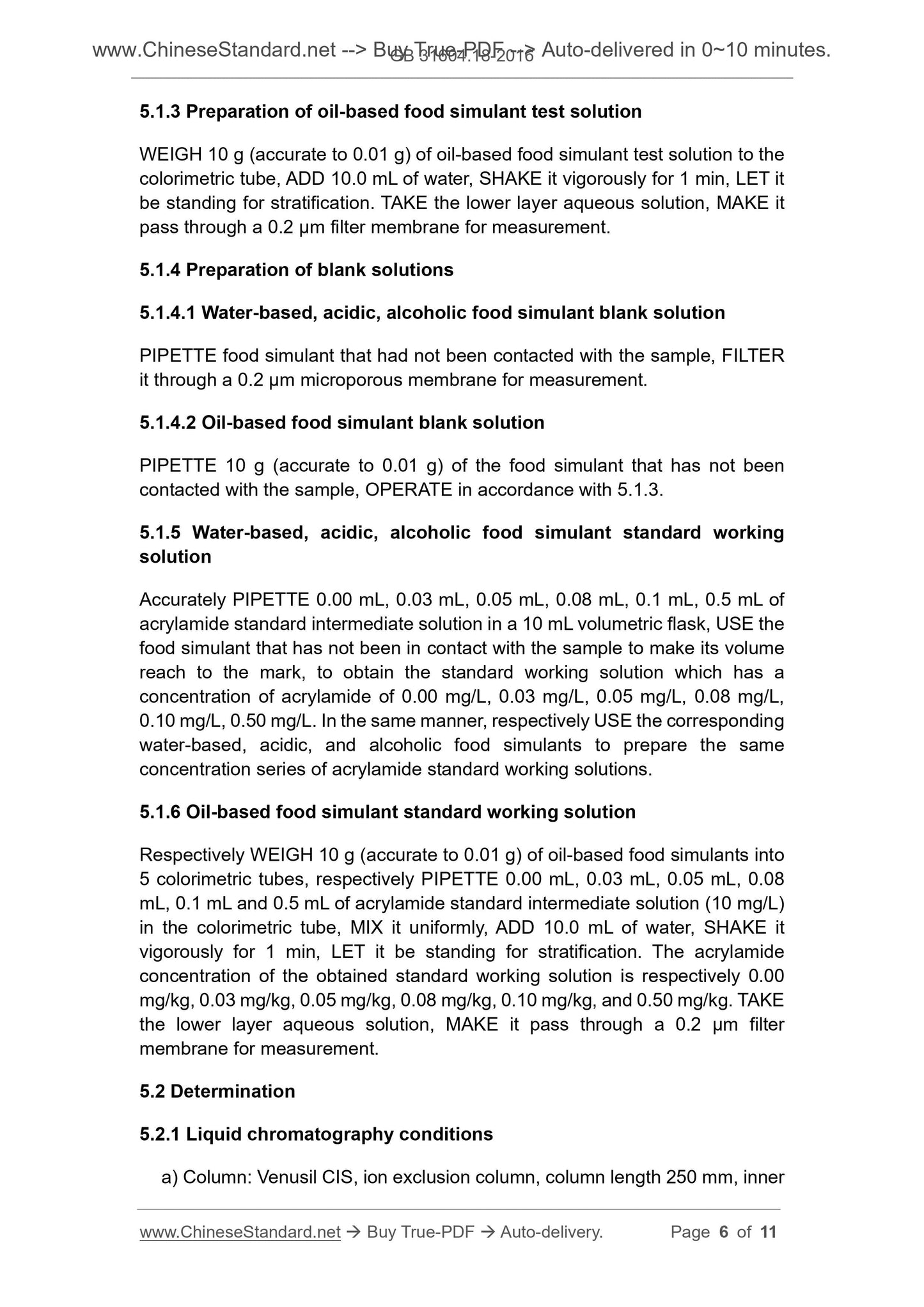1
/
of
5
www.ChineseStandard.us -- Field Test Asia Pte. Ltd.
GB 31604.18-2016 English PDF
GB 31604.18-2016 English PDF
Regular price
$70.00
Regular price
Sale price
$70.00
Unit price
/
per
Shipping calculated at checkout.
Couldn't load pickup availability
GB 31604.18-2016: National food safety standard - Food contact materials and articles - Determination of migration of acrylamide
Delivery: 9 seconds. Download (and Email) true-PDF + Invoice.Get Quotation: Click GB 31604.18-2016 (Self-service in 1-minute)
Newer / historical versions: GB 31604.18-2016
Preview True-PDF
Scope
This standard specifies the determination of the migration of acrylamide in foodcontact materials and articles.
This standard applies to the use of liquid chromatography for the detection of
acrylamide migration in food contact materials and articles.
2 Principle
The food simulants of food contact materials and articles are tested by liquid
chromatography, wherein the water-based, acidic, and alcoholic food simulants
are directly injected, the oil-based food simulants are injected after water
extraction and separated through high-performance liquid chromatography.
(The column is an ion exclusion column), detected by a UV detector, and it is
quantified using the external standard peak area method.
Basic Data
| Standard ID | GB 31604.18-2016 (GB31604.18-2016) |
| Description (Translated English) | National food safety standard - Food contact materials and articles - Determination of migration of acrylamide |
| Sector / Industry | National Standard |
| Classification of Chinese Standard | C53 |
| Word Count Estimation | 8,858 |
| Date of Issue | 2016-10-19 |
| Date of Implementation | 2017-04-19 |
| Older Standard (superseded by this standard) | GB/T 23296.9-2009 |
| Regulation (derived from) | State Health and Family Planning Commission Notice No.1516 of 2016 |
| Issuing agency(ies) | National Health and Family Planning Commission of the People's Republic of China, State Food and Drug Administration |
Share









